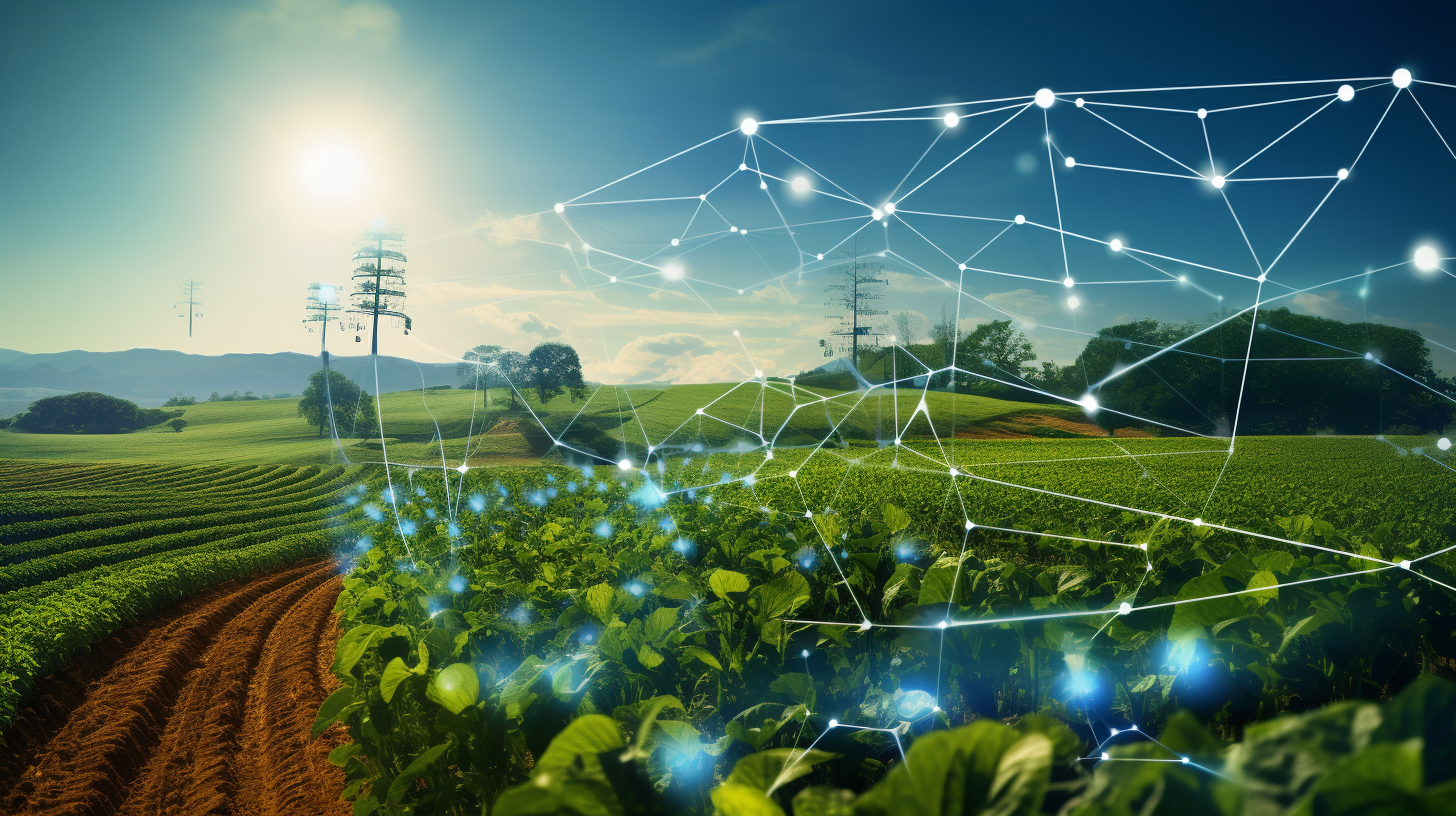The modern farmer doesn’t just till the soil; they also navigate the blockchain. In the revolutionary merge of agriculture and technology, AgriTech and blockchain are interwoven threads in the tapestry of a sustainable future. This isn’t merely an idealistic crossover of buzzwords, but a tangible evolution that’s sprouting up right before our eyes.
‘Circuits and Seeds’ isn’t simply a phrase; it’s become the mantra of the new-age farmer who uses smart contracts to sell crops and drones to monitor fields. Imagine a farm where each vegetable has a digital identity, and supply chain transparency isn’t just a promise but an everyday reality.
The blockchain isn’t a new concept for those who’ve been keeping up with the latest rural development strategies. Our previous article, ‘Unlocking Potential with Crypto-Centric Rural Development,’ touched upon this integration. However, today’s exploration goes deeper into the furrows of futuristic farming practices, revealing how sustainability and technology go hand in leafy green hand.
Blockchain, the unbreakable digital ledger, is revolutionizing how food is grown, tracked, and sold. Smart contracts ensure fair trades for farmers’ produce. These self-executing contracts with the terms of the agreement between buyer and seller directly written into lines of code save time and eliminate the need for middlemen, increasing profit margins for growers who were once at the mercy of larger supply chains.
Then there’s tokenization, a concept we skimmed previously. Here, crops are no longer just crops; they are assets that can be tokenized on the blockchain. This means that a farm’s expected yield can be sold in advance through tokens, attracting early investment and ensuring a market for the produce before it’s even harvested. Tokenization empowers small-scale farmers to access capital and hedge against market volatility, an empowerment that crypto-cooperatives have begun to harness effectively.
Regenerative agriculture practices are also finding firm footing with the support of blockchain technology. By tracking and rewarding sustainable practices with crypto tokens, blockchain gives farmers a financial incentive to look after the environment. This system aligns the objectives of profit and planet under a common goal: healthier soil for future generations.
Moreover, blockchain takes on the challenge of food fraud. By implementing end-to-end traceability from seed to shelf, consumers can verify the origin of their food, thus ensuring its quality and authenticity. The complex food supply chain becomes transparent, building trust between consumers and producers.
Let’s not forget smart farming equipment that communicates directly with decentralized networks. Sensors and IoT (Internet of Things) devices collect data on soil health, crop growth, and water usage, which is then securely stored on the blockchain. Farmers can make well-informed decisions, precise adjustments, and report with guaranteed integrity.
However, this brave new world of blockchain-driven agriculture is not without its challenges. Adoption by the farming community demands significant investment in technology and education. Digital and physical infrastructure must grow in tandem to support these high-tech ventures.
In conclusion, ‘Circuits and Seeds’ paints a vision of a sustainably fed planet enhanced by blockchain technology. By providing efficiency, transparency, and trust, blockchain is seeding change that reaches far beyond the fields. It’s cultivating a future where technology serves as both the plough and the promise, and cryptocurrencies don’t just fund, but fuel growth in ways that enrich both the land and its stewards.
